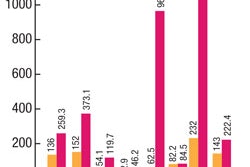
Many commentators (myself included) have written about the wealth of packaging innovations to be found in the mature markets of North America, Western Europe and Japan. Not to be overlooked however is the story taking place in Latin America, home to more than 500 million consumers with 290 million citizens in Brazil and Mexico alone. In addition to a growing middle class, improving conditions among poorer consumers (who represent up to 70% of the population in some countries) have fuelled strong expansion in packaging volumes, creating a major opportunity for packaging firms.
For example, in Brazil policies such as the Bolsa Familia, a regular stipend to poorer families, coupled with a more stable economic environment have significantly boosted purchasing power among lower-income consumers with many making regular purchases of packaged goods for the first time. Manufacturers have responded with a range of smaller products in low-priced packaging for more frequent purchases by families who have limited storage space and often lack transportation. In Argentina, where the economy continues to recover from the economic crisis of 2001, packaging manufacturers have achieved success in an environment of lower incomes and government price controls by introducing smaller sized packages made from more economical materials.
While the market for the kind of high-margin premium products found in the United States and elsewhere remains relatively small (though it, too is growing), the sheer size of the Latin American market, coupled with its potential for growth, make it a valuable opportunity for packaging and product manufacturers willing to take the time to understand the unique needs of lower-income consumers.


























